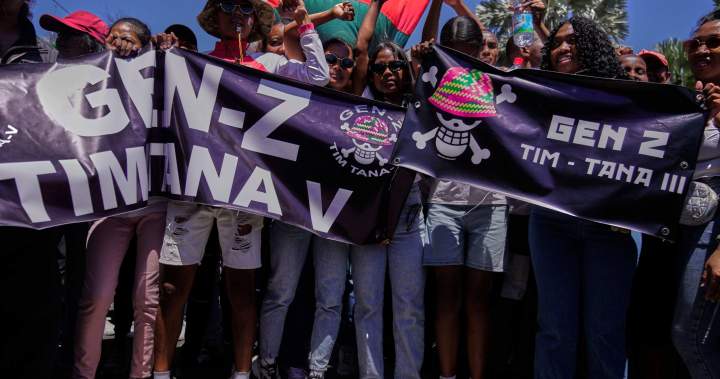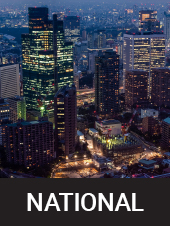Useful information
Prime News delivers timely, accurate news and insights on global events, politics, business, and technology
Useful information
Prime News delivers timely, accurate news and insights on global events, politics, business, and technology

From the Andes to the Himalayas, a new wave of protests is unfolding around the world, fueled by generational discontent against governments and anger among young people.
This week, Madagascar’s president, Andry Rajoelina, was forced to leave power and leave the country after a military mutiny, the culmination of weeks of demonstrations led by young protesters who referred to themselves as “Generation Z Madagascar.”
The fury against the political establishment in the Indian Ocean island country mirrors other recent protests around the world, in countries including Nepal, the Philippines, Indonesia, Kenya, Peru and Morocco. These protests have been sparked by specific grievances, but are driven by long-simmering issues such as growing inequality, economic uncertainty, corruption, and leadership nepotism.
But they have one thing in common: Mostly leaderless, they are made up primarily of young people who call themselves “Generation Z,” defined as those born roughly between 1996 and 2010, the first generation to grow up fully in the Internet age.
“What connects these youth-led protests is a shared sense that traditional political systems are not responding to the concerns of their generation, whether corruption, climate change or economic inequality. Protest then becomes the logical way out when institutional channels feel blocked,” said Sam Nadel, director of Social Change Lab, a UK-based nonprofit that researches protests and movements. social.
Although their specific demands differ, most of these protests have been sparked by government overreach or negligence. Some have also faced harsh treatment by security forces and brutal repression.
In Morocco, a leaderless collective called Generation Z 212 (named after Morocco’s telephone code) has taken to the streets to demand better public services and greater spending on health and education. In Peru, protests over a pension law exploded into broader demands, including action to address growing insecurity and widespread corruption in the government. In Indonesia, deadly protests have erupted over lawmakers’ perks and the cost of living, forcing the president to replace key economy and security ministers.
The most widely recognized movement that has been dubbed the “Generation Z” protest was a deadly uprising in Nepal that culminated in the resignation of the prime minister in September. The protesters were inspired by successful anti-government movements in other parts of South Asia (Sri Lanka in 2022 and Bangladesh in 2024) that led to the overthrow of ruling regimes.

For news affecting Canada and around the world, sign up to receive breaking news alerts delivered directly to you as it happens.
In Madagascar, in turn, protesters say they were particularly inspired by movements in Nepal and Sri Lanka.
The protests began against regular water and electricity cuts, but quickly morphed into broader discontent, as protesters called for the president and other ministers to resign. On Wednesday, Madagascar’s military coup leader said he will “take over as president.”
United behind a pirate flag manga
A unique pop culture symbol has emerged in several countries: a black flag depicting a smiling skull and crossbones wearing a straw hat. The flag comes from a cult Japanese manga and anime series called “One Piece,” which follows a crew of pirates who take on corrupt governments.
In Nepal, protesters hung the same flag on the gates of Singha Durbar, the seat of the Nepalese government, and on ministries, many of which were burned during the protests. It was also hoisted by crowds in Indonesia, the Philippines, Morocco and Madagascar.
An activist holds a sign while a flag with the image of a skull wearing a straw hat from the popular Japanese anime One Piece is displayed, during a demonstration denouncing the violence allegedly committed by the police in the days of protests against the generous subsidies given to members of parliament, in Jakarta, Indonesia, Wednesday, September 3, 2025. (AP Photo/Dita Alangkara).
Last week in the Peruvian capital, Lima, electrician David Tafur, 27, stood with the same flag in Plaza San Martín, now the scene of weekly protests.
“We are fighting the same battle: against corrupt officials who, in our case, are also murderers,” he said, recalling that President Dina Boluarte’s government has remained in power since December 2022 despite more than 500 protests and the deaths of 50 civilians.
“In my case, it is outrage over the abuse of power, the corruption, the deaths,” Tafur said, referring to the sharp increase in murders and extortion that has plagued the South American country since 2017, amid new laws that have weakened efforts to combat crime.
Boluarte had been under investigation for months for several accusations, including bribery and involvement in a deadly crackdown on protesters in 2022. She was replaced last week by interim president José Jerí.
Tafur said that was not enough.
“The president is an ally of Congress and he has to go,” he said.
Take advantage of social networks for mobilization and awareness
Many major protests in the past, such as Occupy Wall Street in 2011, the Arab Spring between 2010 and 2012, and the 2014 Umbrella Revolution in Hong Kong, have been led by younger people. While they also used the Internet and social media for mass mobilization, “Generation Z” protesters are taking it to another level.
“Digital platforms are powerful tools for sharing information and building connections, but the most effective movements often combine digital mobilization with traditional in-person organizing, as we’ve seen in these recent protests,” said Social Change Lab’s Nadel.
Days before deadly protests began in Nepal, the government announced a ban on most social media platforms for failing to meet registration deadlines. Many Nepalese youth saw it as an attempt to silence them and began accessing social networking sites through virtual private networks to evade detection.
Over the next few days, they used TikTok, Instagram and X to highlight the lavish lifestyles of politicians’ children, highlight disparities between Nepal’s rich and poor, and announce planned rallies and venues. Later, some of them also used the gaming chat platform Discord to suggest who to nominate as the country’s interim leader.
“Any movement that occurs, be it against corruption or injustice, spreads through digital media. The same thing happened in Nepal. The changes that took place after the Generation Z protests in Nepal spread globally through digital platforms, influencing other countries as well,” said protester Yujan Rajbhandari.
He said the protests in Nepal woke up not only the youth but also other generations.
“We realized that we are global citizens and the digital space connects us all and plays a powerful role across the world,” Rajbhandari said.
Associated Press writers Franklin Briceño in Lima, Peru, and Niranjan Shrestha in Kathmandu, Nepal, contributed to this report.

